10 B2B Sales Enablement Tools That Outperform Manual Work
“Our sales tech stack has 15 tools, but somehow I’m still manually copying data between spreadsheets.”
If that hits too close to home, you’re not alone. Sales teams are drowning in tools, yet somehow, work still slips through the cracks. Instead of making life easier, a messy stack just creates more logins, more tabs, and more manual tasks.
The truth? The right tools don’t just add features—they eliminate friction. They help you automate repetitive work, personalize outreach at scale, and focus on what actually moves the needle: selling.
But with thousands of sales tools out there, which ones actually do their job? We’ve cut through the noise to bring you 10 B2B sales tools that won’t just sit in your stack—they’ll actually help you close more deals, faster.
What are The 10 Best B2B Sales Enablement Tools (and Who Actually Needs Them)?
Your pipeline is a mess.
Deals are slipping through the cracks.
Prospects open your emails but never reply.
And that “game-changing” sales tool you just bought? It’s collecting dust because no one has time to figure it out.
B2B sales isn’t just hard—it’s relentless. Reps are juggling prospecting, follow-ups, demos, and forecasts, all while fighting to hit quota in a market where buyers are harder to reach and even harder to convince. And without the right tools, most of that work turns into wasted effort.
Here’s the reality: sales teams don’t need more software—they need the right software. Tools that actually reduce friction and give you real-time data to close deals faster. That means precision in outreach, smart automation that doesn’t feel robotic, and analytics that tell you why a deal is stalling before it’s too late.
So, which tools make the cut? Here are the 10 B2B sales tools that actually move the needle.
1. SmartCue – A Tool for Interactive Product Demos That Convert
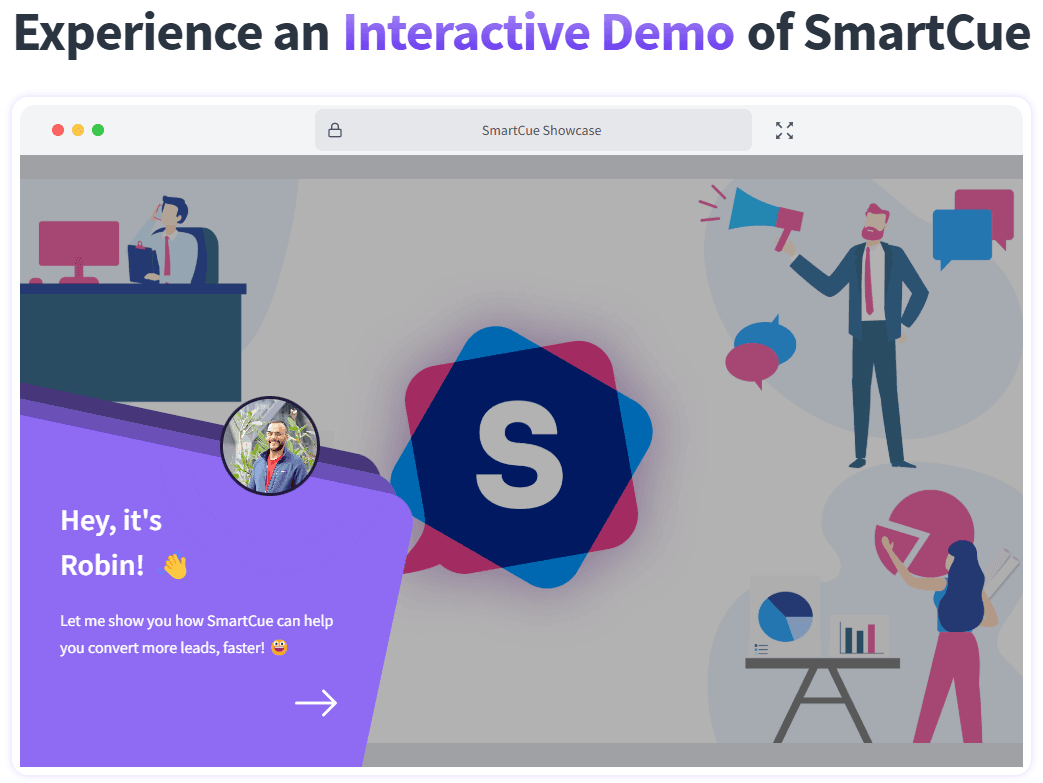
Demos should sell, not stall. Yet, 50-60% of demo requests never lead to meetings due to slow follow-ups, and traditional videos fail to hold attention.
SmartCue fixes this by enabling sales and marketing teams to create engaging, interactive demos that let buyers experience the product instantly—no meetings required.
Why SmartCue Stands Out
Capture Attention & Qualify Leads Faster – Buyers want a hands-on experience before committing. With SmartCue, they can explore product features at their own pace, leading to higher engagement and faster conversions.
Create & Personalize Demos in Minutes – Easily record product workflows, customize with annotations, callouts, and zoom effects, and tailor demos for different industries, use cases, and decision-makers from your content management library to enhance your content library.
Distribute at Scale – Embed demos on your website, share them via secure links, or export as PDF, GIF, or video for repurposing across multiple channels.
Measure What Works – Track demo engagement, including time spent, drop-off rates, and impressions, to refine your approach and maximize ROI.
Seamlessly Collaborate & Iterate – Work alongside sales, product, and marketing teams to refine demos based on feedback. Plus, SmartCue integrates with HubSpot, Salesforce, Seismic, and more for a connected sales process.
Real-World Results from SmartCue Users
More Deals, Shorter Sales Cycles:
"With SmartCue, we’ve transformed our demo experience into interactive, self-serve journeys that cater directly to each prospect’s needs. By the time they reach our sales team, they’re well-informed and ready to buy."
— Brian Harrigan, SVP Sales, DarioHealth
Easy to Use, Big Impact:
"SmartCue took no time to learn—quick, easy, and super effective. Our demos now feel like real hands-on interactions, making it a game-changer for sales and training."
— Kevin Hulen, Product Manager
Scalable & Personalized Demos:
"Instead of scheduling countless demo calls, prospects now explore our product on their own. SmartCue has made explaining complex features effortless."
— Akash M., Founder CEO, Kloudle
Who Should Use SmartCue?
Sales Teams – Reduce demo prep time, qualify leads better, and speed up deal cycles
Product Marketers – Craft tailored experiences to drive engagement and boost conversions
Growth Teams – Embed interactive demos in ads, landing pages, and ABM campaigns to drive demand
2. Salesloft – Best for Sales Cadences and Post-Demo Nurturing
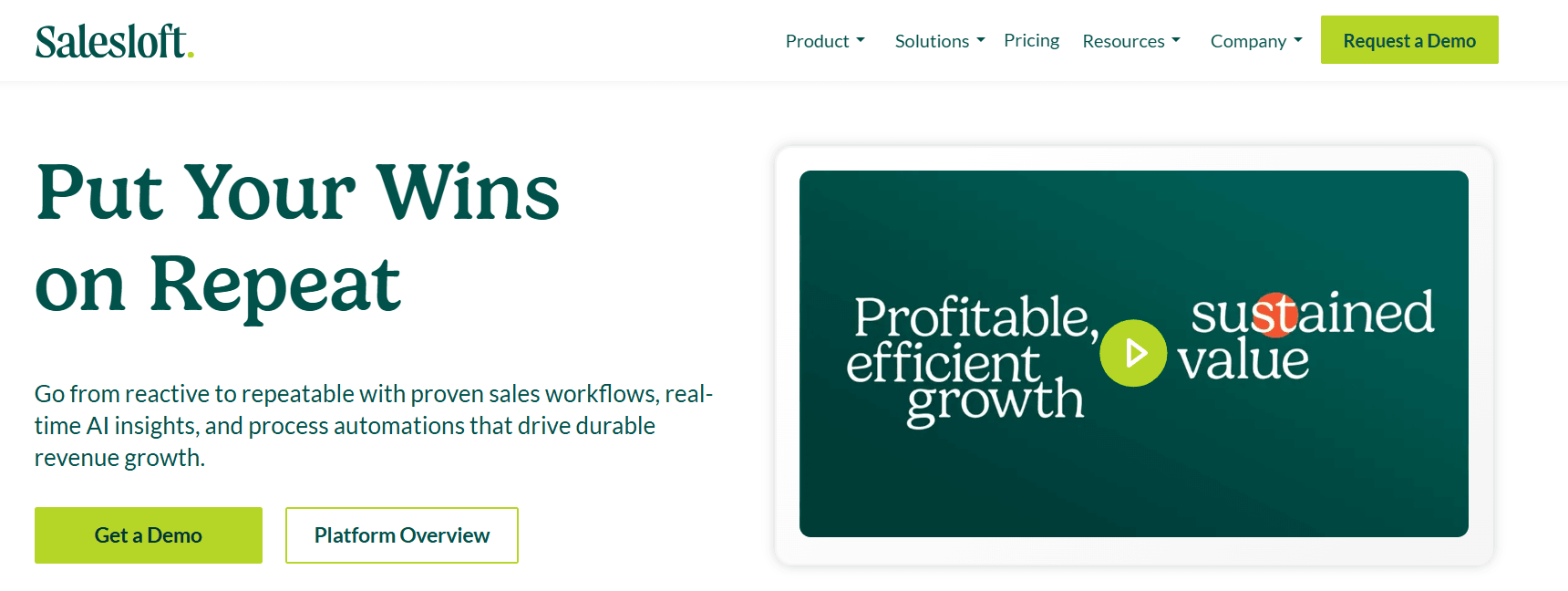
Salesloft enables structured sales cadences, ensuring consistent follow-ups after demos and meetings.
Why It’s Useful
Automated multi-touch cadences for lead nurturing
Integrated dialer for efficient cold calling
Data-driven insights optimize sales outreach
Best for: Sales teams focused on post-demo follow-ups and deal progression.
3. Chili Piper – Best for Meeting Scheduling and Lead Routing

Chili Piper eliminates back-and-forth emails by allowing leads to book meetings instantly.
Why It’s Useful
One-click meeting booking directly from emails or web forms
Automated lead routing ensures prospects meet the right rep
Accelerates inbound lead conversion
Best for: SDRs, AEs, and high-velocity sales teams.
4. Drift – Best for Conversational Sales and Chatbots

Drift engages website visitors in real time with AI-powered chatbots, capturing and qualifying leads instantly.
Why It’s Useful
24/7 chatbot nurtures prospects even when sales reps are offline
Instant meeting scheduling directly from chat
Conversation analytics optimize messaging for higher conversions
Best for: SaaS companies and sales teams handling high inbound traffic.
5. PandaDoc – Best for Proposal and Contract Automation

PandaDoc simplifies document workflows, making the proposal and contract process frictionless.
Why It’s Useful
Automates contract creation and e-signatures
Customizable proposal templates speed up deal closures
Real-time tracking shows when prospects open and engage with documents
Best for: AEs and sales ops teams handling contracts and deal approvals.
6. Kluster – Best for Sales Forecasting and Pipeline Management
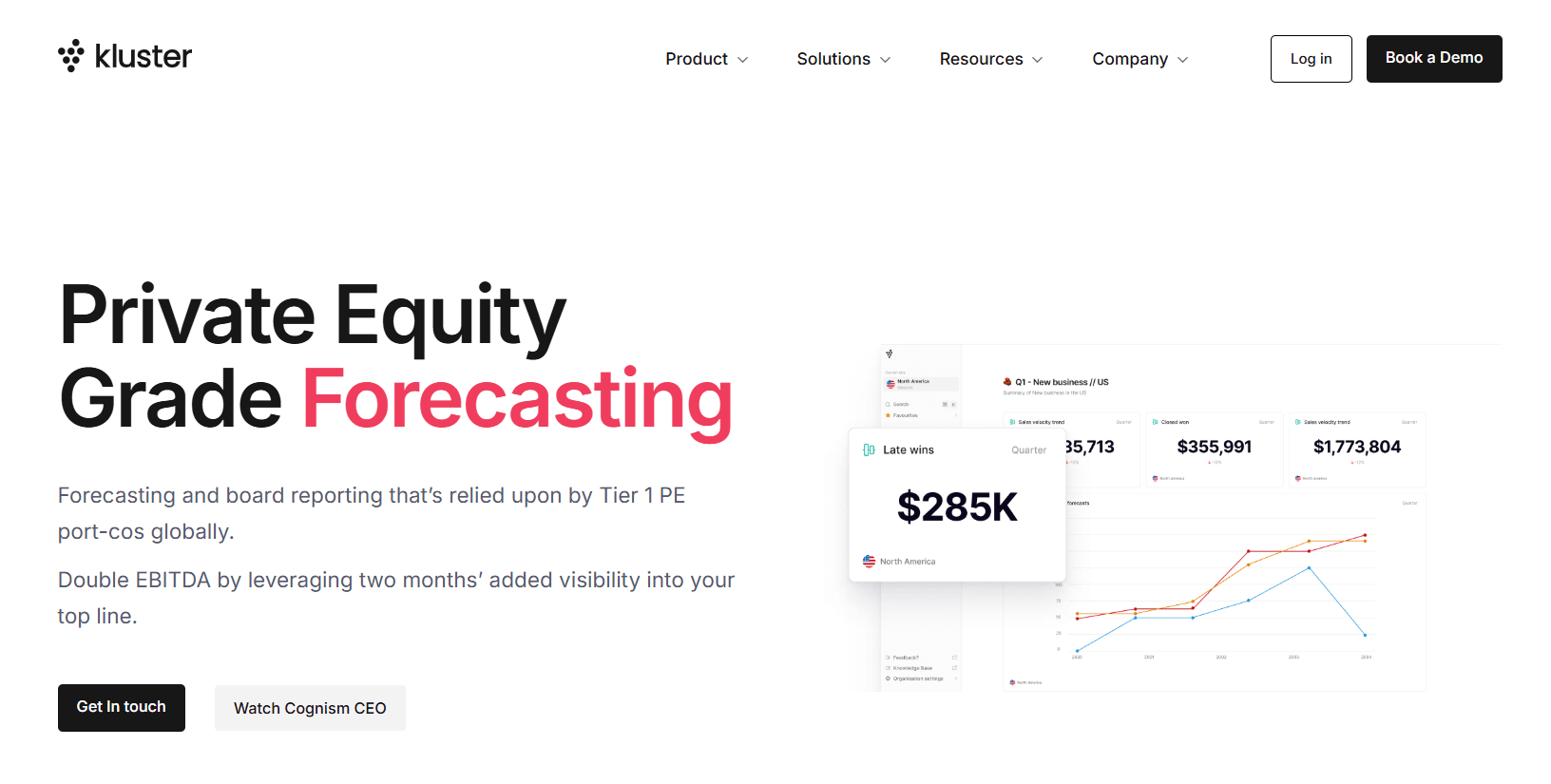
Kluster helps sales leaders predict revenue and optimize their pipeline with AI-driven insights.
Why It’s Useful
Accurate revenue forecasting based on real-time CRM data
Identifies pipeline risks and struggling sales teams
Helps sales leaders allocate resources more effectively
Best for: Sales VPs, revenue ops, and data-driven sales teams.
7. Cognism – Best for B2B Sales Prospecting
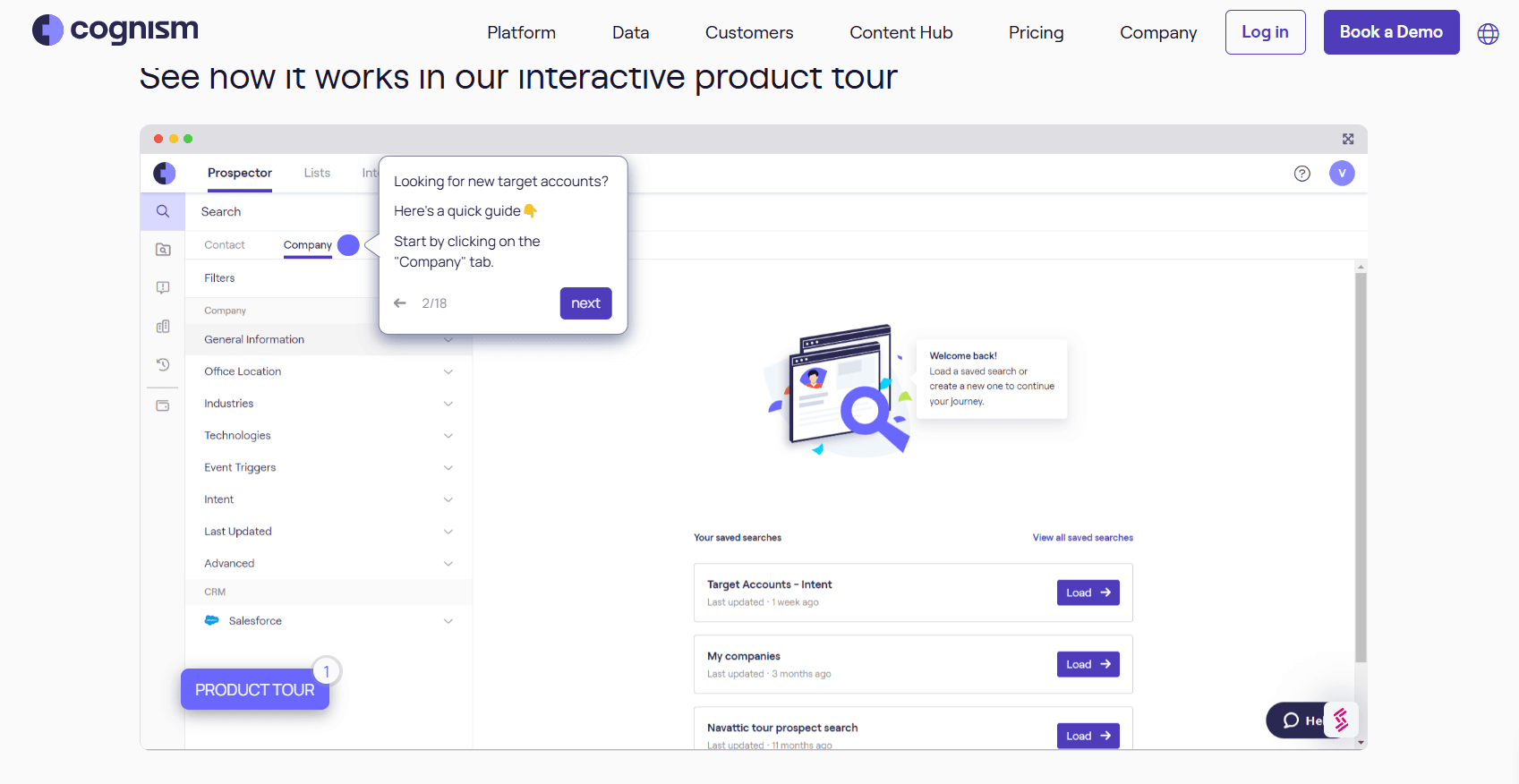
Cognism delivers human-verified contact data, including direct dials and business emails, to help sales teams reach decision-makers faster.
Why It’s Useful
87 percent accuracy-guaranteed direct dials for key decision-makers
AI-powered search to find ideal prospects quickly
Compliance with GDPR and CCPA for trustworthy data
CRM integration for seamless lead enrichment
Best for: SDRs, sales managers, and outbound-focused B2B sales teams.
8. Gong – Best for Sales Intelligence and Coaching
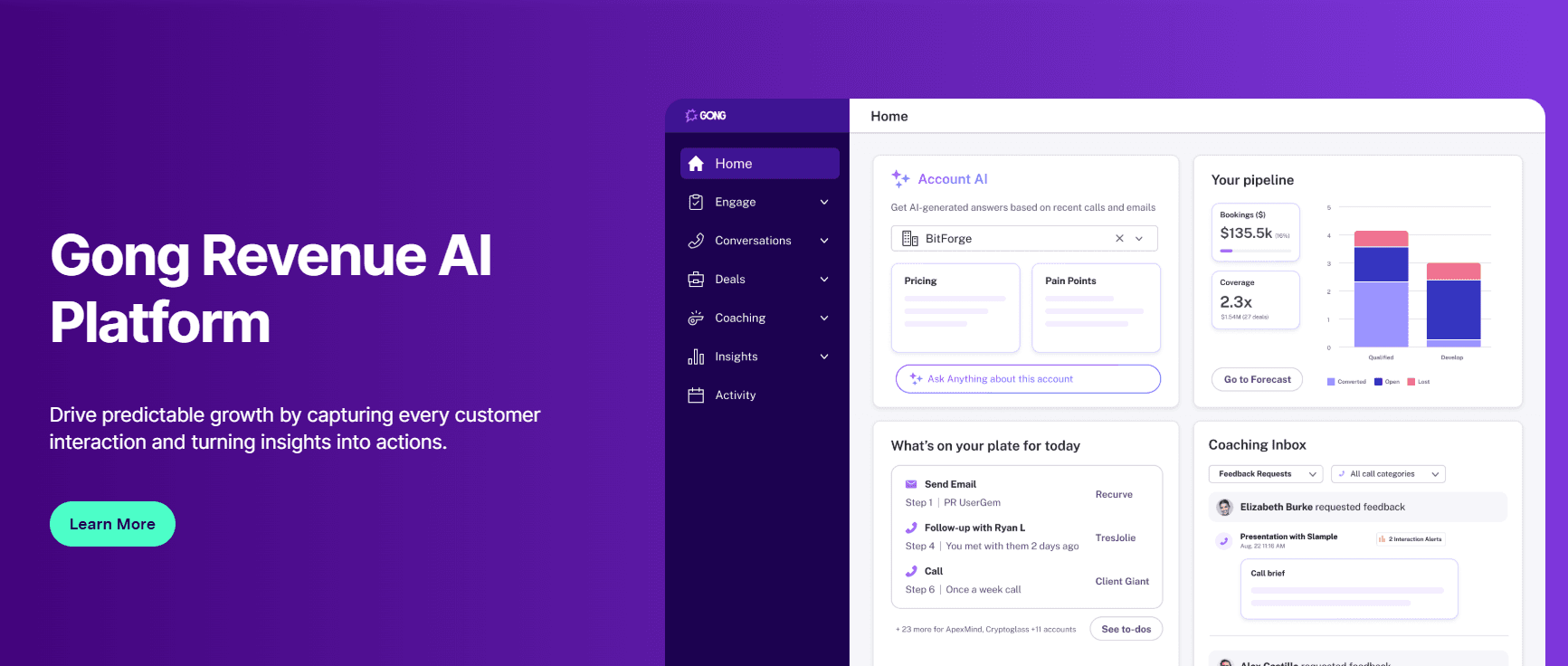
Gong analyzes sales calls, emails, and meetings to provide data-driven insights that help teams improve their pitch and close more deals.
Why It’s Useful
AI-powered conversation analysis identifies winning sales strategies
Coaching insights help reps refine their approach
Deal risk analysis flags potential issues before they escalate
Best for: Sales leaders, account executives, and revenue operations teams.
9. Outreach – Best for Sales Engagement and Automation

Outreach automates sales follow-ups across multiple channels, ensuring no lead slips through the cracks.
Why It’s Useful
Automates email, call, and LinkedIn sequences
AI-driven insights optimize messaging and timing
Advanced sequencing ensures consistent lead nurturing
Best for: SDRs, account executives, and outbound sales teams.
10. LeadSquared – Best for Lead Management and Automation

LeadSquared helps sales teams capture, distribute, and track leads efficiently, ensuring high-intent prospects don’t get lost.
Why It’s Useful
Automated lead scoring prioritizes the hottest prospects
Sales tracking and reminders improve follow-up efficiency
Performance analytics help managers refine sales strategies
Best for: Sales teams handling high-volume inbound and outbound leads.
You Have the B2B Sales Enablement Tools —Now Let’s Turn Them Into Revenue
Sales tools alone don’t close deals. If they did, every rep with a stacked tech stack would be crushing quota.
The real challenge? Moving leads through the pipeline without losing them to slow follow-ups, generic pitches, or sheer disinterest. Buyers today are impatient. They’re bombarded with outreach, skeptical of sales pitches, and reluctant to commit to yet another “quick call.”
To win, you need a pipeline strategy that doesn’t just generate leads but keeps them engaged—and that starts with how you introduce your product.
The Key to Faster Conversions: Let Buyers Experience the Product
Think about it: decision-makers don’t want to be told how your software works. They want to see it, try it, and instantly know if it’s a fit. Yet, traditional sales motions—cold emails, PDFs, and endless slide decks—fail to deliver that clarity.
The fastest way to create urgency and qualify leads? Give them direct, hands-on access to your product.
Interactive demos bridge the gap between curiosity and commitment. They let prospects explore key features, visualize how the solution fits their workflow, and self-qualify before ever jumping on a call. This eliminates wasted time on unqualified leads while accelerating those who are ready to buy.
How SmartCue Drives Higher Engagement and Faster Sales
SmartCue transforms early-stage engagement by:
Turning passive interest into active engagement – Instead of reading about your product, buyers experience it firsthand with guided, personalized demos, which effectively supports the buyer’s journey.
Shortening the sales cycle – Leads arrive at calls already familiar with your product, reducing repetitive explanations and fast-tracking decision-making.
Boosting conversion rates – Interactive demos act as a pre-qualification filter, ensuring sales teams spend time on high-intent prospects, not tire-kickers.
Try SmartCue Free for 14 Days – No Commitment
Not sure how SmartCue fits into your workflow? The best way to find out is to try it yourself—risk-free. Here's how you can create interactive demos that engage leads, shorten your sales cycle, and drive conversions in just a few minutes.
Step 1: Sign Up & Install the Chrome Extension
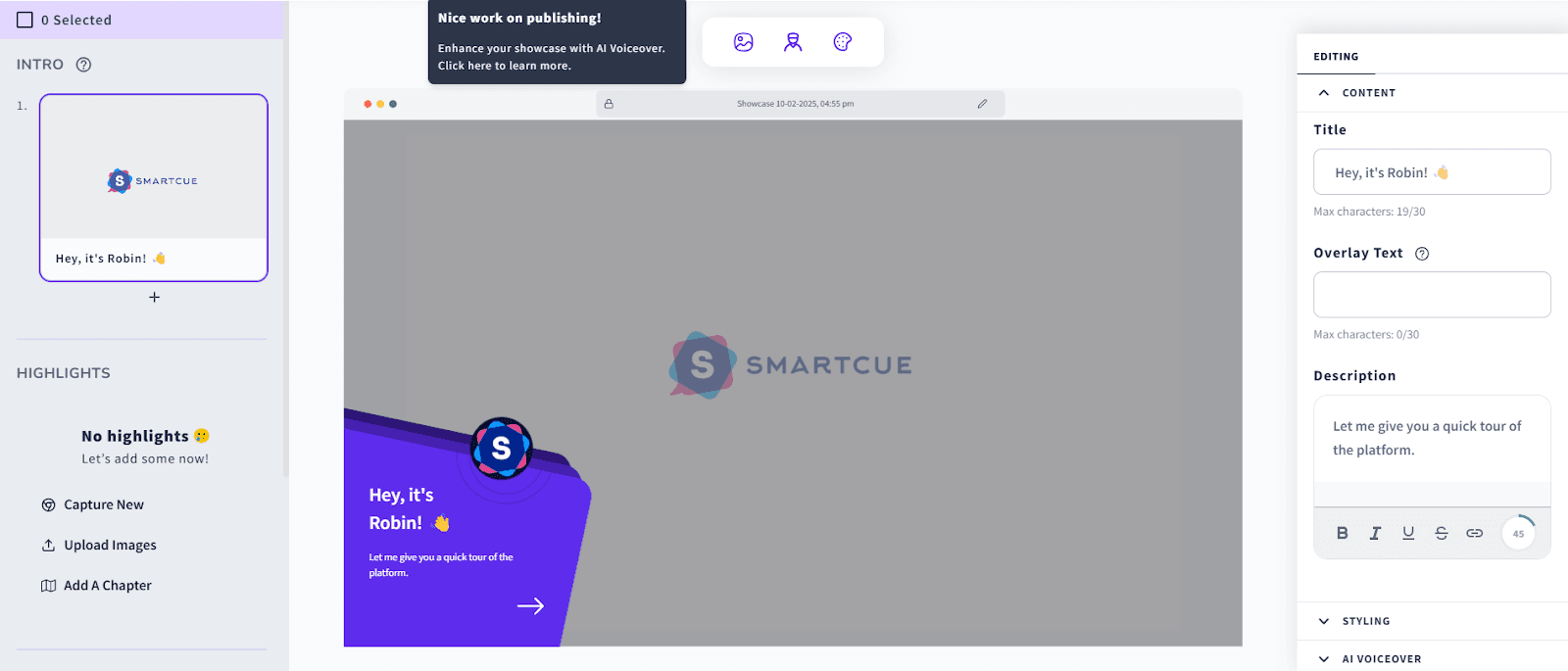
Get started with SmartCue’s free trial and set up your workspace in minutes.
Step 2: Capture & Build Your Demo

Use SmartCue to record your product walkthrough or start from a ready-made template.
Step 3: Customize for Clarity & Engagement

Add tooltips, text overlays, and interactive elements to guide prospects through your product’s value—without overwhelming them.
Step 4: Share & Track Engagement
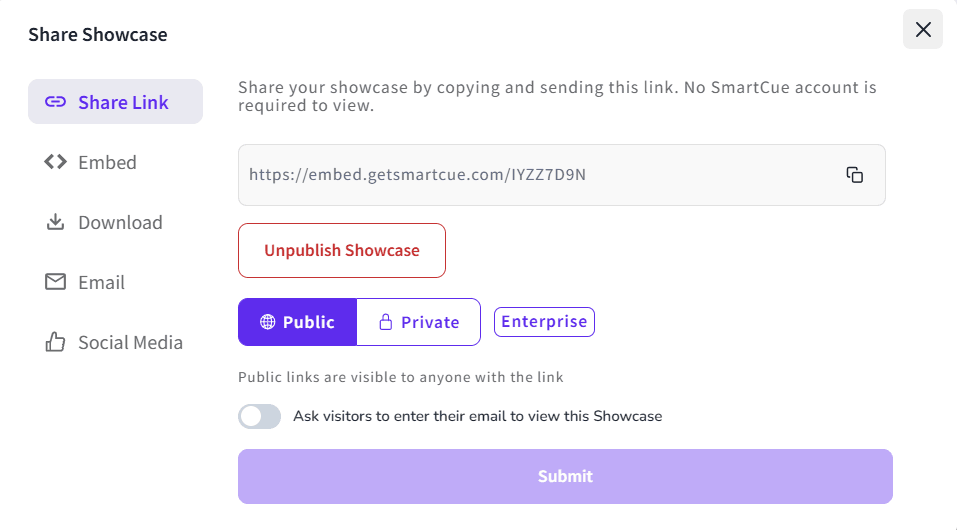
Send your demo link, then track which features prospects engage with the most—so you know exactly what resonates.
Frequently Asked Questions
1. What are B2B sales enablement tools, and why are they important?
B2B sales enablement tools help sales operations teams deliver the right content at the right time within the sales pipeline, improving customer experience and sales performance. They provide conversation intelligence, sales content management, and actionable insights to engage potential customers with relevant content, reducing deal cycles.
2. How does an effective sales enablement strategy improve sales productivity?
An enablement strategy ensures reps spend less time searching for valuable insights into sales enablement content and more time closing deals. With sales training, sales coaching, and customer relationship management tools, B2B sales enablement tools, B2B sales enablement metrics, teams access training materials and enablement content to boost sales performance at every stage of the pipeline.
3. What role does a sales enablement platform play in customer success?
A sales enablement platform centralizes sales content, social media insights, B2B sales enablement tools, and sales analytics content creation tools to help reps engage potential customers effectively. With sales content management and conversation intelligence, sales teams gain actionable insights, improving customer experience and driving higher conversion rates.
4. How can sales enablement software improve sales content creation and management?
Sales enablement software streamlines content creation and ensures sales teams use relevant content tailored to each stage of the buyer journey. By integrating sales content management, Dealfront’s sales enablement solution, B2B sales enablement tools, and conversation intelligence, reps deliver the right information and content at the right time for maximum impact.
5. Why should companies invest in sales coaching and sales training materials?
Sales coaching and training materials equip reps with the skills to engage potential customers effectively. Backed by case studies and an enablement strategy, training ensures sales teams leverage enablement content, focusing on team performance and B2B sales enablement tools improving customer relationship management and overall sales productivity.
Comments
Your comment has been submitted successfully!